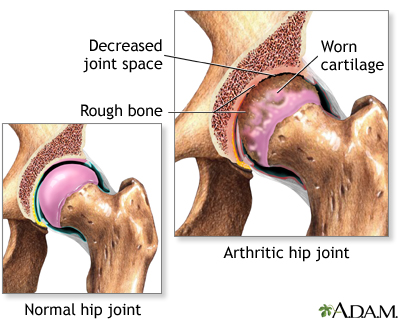Arthritis is a broad term that encompasses conditions which affect joints. Broadly speaking, the structures which protect and reinforce the joint become damaged and the patient starts to experience pain, stiffness and inflammation. For instance, the cartilage, which is the tissue that covers the bone surface and allows ease of movement wears out and the bone tissue grinds against itself causing a lot of discomfort to the patient. The most common types of arthritis are osteoarthritis, rheumatoid arthritis and juvenile arthritis.
Causes of Arthritis
There are risk factors which increase the likelihood of developing osteoarthritis:
Age-as people get older, the weight bearing joints usually in the lower limbs wear out and the normal healing process which ought to help restore it in the human body tends to decline as one gets older.
Weight: Weight increases the work of the joints and the load on it, with increased weight, there are higher the chances of wear and tear and altered biomechanics in the joint.
Repeated positions: positions or sports which repetitively load the joint increase the sheer force within it. Throwing, squatting, running and lifting of heavy objects are common causes.
Previous injury: Existing pre-conditions or previous injury causes alterations in the biomechanics of the knee joint. This subsequently leads to abnormal load distribution and can contribute to occurrence of arthritis
Osteoarthritis
This is one of the most common types of arthritis and while it is considered a degenerative disease, it does not only occur in older adults. Symptoms are:
- Pain which is worse with activity or towards the end of the day
- Limited range of motion or stiffness especially in the morning or after being in a position for too long.
- Grating, clicking or cracking sounds when the joint moves
- Swelling around the joint
- Deformity of the joint
Rheumatoid arthritis
This is an autoimmune disease in which the body’s immune system attacks the joints. This creates inflammation which causes the synovium, the tissue which lines the joints to thicken. This thickening results in swelling and pain in the joints. The inflammation if left unchecked is progressive and causes erosion of the joint surfaces. The joint then becomes loose, painful and loses its mobility and deformity occurs because the capsules are stretched too thin. It is a systemic disease and it can affect body systems such as skin, respiratory and cardiovascular systems.
Signs and symptoms of RA
- Joint pain and swelling,
- Stiffness lasting more than 30 minutes,
- Anaemia,
- Fatigue,
- Rheumatoid nodules
- Feeling of malaise
- It usually starts slowly and can have periods of remission. It commonly occurs in the small joints of the body-hands, feet, wrists, elbows, knees, ankles.
- It is usually bilateral-affecting two sides of the body at the same time (two feet, two hands)
Treatment of Arthritis
Depending on the type of arthritis diagnosed, the treatment protocol may vary. For instance, because joint damage from rheumatoid arthritis cannot be reversed, it is important to seek early and aggressive diagnosis and treatment. Referral to a rheumatologist may be required if rheumatoid arthritis is queried.
There are instances when surgery may be advised and physiotherapy may be required for pre and post operative rehabilitation to restore range of motion.
PhysioCraft protocol in managing arthritis includes but is not limited to:
Reducing pain and inflammation, improving range of motion, strengthening muscles around the joint, prescribing appropriate braces and improve balance, alignment and walking or transfer techniques.
If you have more questions or want free physiotherapy advice relating to this, why don’t you give us a call on +2348035670888 or +2348179140921 we would be happy to help.

